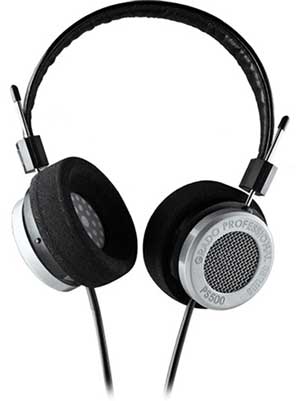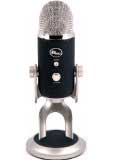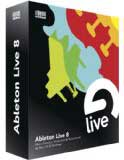The MIDI drum program called Jamstix, By Rayzoon is a really cool computer drum machine on steroids. I talk about it and the many cool features in this post – Virtual Drumming – Use Your Computer to Drum Without Drums. Today Rayzoon announced the update to Jamstix 3.5. One of the updates includes support for native 64-bit VST (for PC), which is perfect timing for me since I’m in the middle of a migration from 32-bit to 64-bit Windows.
Check out the rest of the details for the latest version here: http://www.rayzoon.com/jamstix3_upd.html
Headphones Auggie Wore In Covert Affairs Season Finale

Since I’ve done it several times now (Headphones Michael Phelps Wore At 2012 Olympics, Headphones Emily Chang Wears In Ruffles Commercial, etc.), I guess it’s my thing – identifying the headphones, or other audio- related thingy that appears on a popular TV show. This time it’s about the pair of headphones that the character of Auggie Anderson, in USA’s TV series Covert Affairs, was wearing during the plane ride back from Amsterdam in the season finale. They were the Grado PS500 professional series headphones.
The PS500s are part of Grado’s Professional Series of high-end headphones (the PS500 and the PS1000). They are of the open-back variety, which means there is enough air for the audio to move and typically provide more pleasing and accurate music reproduction. These are also circumaural headphones, which means the fit over the ear rather than on top of them, so the ear sits inside the cups – much more comfortable.
The review on the Grado website – http://www.gradolabs.com/ states that even though these are high-end headphones, they sound awesome with miniature sound devices like iPods and iPhones.
The PS500 phones are the little brother to the PS1000, which are widely acknowledged to be the best audiophile headphones out there, and for $1,695, I would hope so:).
Both of the Professional Series Grado headphones use a proprietary wood and metal hybrid housing to ensure that the earphone has no ringing that might color or otherwise interfere with the pure quality sound.
If you want to be just like Auggie, you can grab your own by clicking here – $595
What Does Aliasing Mean In Digital Audio?
 You probably don’t need to understand what aliasing in digital audio means. Most people just wanting to record great sounding audio on their home recording studios don’t really ever need to have a deep understanding of digital audio theories and concepts. But knowledge is never wasted, and there are lots of folks who really do want to know the nitty-gritty technical stuff. So here is a little primer on aliasing.
You probably don’t need to understand what aliasing in digital audio means. Most people just wanting to record great sounding audio on their home recording studios don’t really ever need to have a deep understanding of digital audio theories and concepts. But knowledge is never wasted, and there are lots of folks who really do want to know the nitty-gritty technical stuff. So here is a little primer on aliasing.
The concept of aliasing is related to sampling frequency, so you might want to review our article – What Is Sampling Frequency? before we talk too much about aliasing. But it really isn’t that tough a thing to understand. Basically is all has to do with making sure that the number of pictures (samples) of our audio the analog-to-digital converter (ADC) is sufficient to represent that audio in computer language. Since it is commonly held that the range of human hearing is 20 Hz to 20,000 Hz, we want to make sure that if a sound happens that is at a frequency of 20,000 Hz (20 KHz), our converter takes pictures fast enough to capture at least 2 pictures in 1 cycle of the audio – 1 to represent the high point and 1 to represent the low point. That number may not be ideal, but technology can interpolate and smooth out curves enough to make the digital version sound close enough to the real (analog) sound. Of course it is the rare human who can actually hear a 20 KHz sound. But that’s another matter.
So in order to make sure our converter can take 2 pictures of a 20 KHz wave, it needs to be able to capture at least 1 picture every 40,000 cycles of a wave per second – 40 KHz. The standard was actually set a bit faster than that at 44,100 Hz, which is why you will see the term “44.1 KHz” so often. But what if a sound happens that is above 20 KHz? Bad stuff, that’s what. At least “inaccurate” stuff. That is what aliasing is.
Read more about it in this article by Michael Pinson, which is refreshingly easy to understand for such a technical subject.
http://www.prosoundweb.com/article/in_the_studio_digital_audio_aliasing_explained/
Black Friday Week Deals On Recording Gear At Amazon
Amazon.com is running its Black Friday Week deals all week starting today – November 19th. I just checked to see if they had any good deals on audio recording gear and was pleasantly surprised to see that they do indeed!
Click here to be taken to their Black Friday Week Studio Recording Equipment page and see all their recording deals.
I looked through them and found a few especially good deals.
The Blue Yeti Pro USB and XLR Mic
 This is the “Pro” version of the famous Blue Yeti USB mic. What makes it special is that it can do double-duty as both a USB mic AND/OR a standard XLR mic! Normal price is $219. This week it’s $199.99 new, with several used models from $152. Click Here
This is the “Pro” version of the famous Blue Yeti USB mic. What makes it special is that it can do double-duty as both a USB mic AND/OR a standard XLR mic! Normal price is $219. This week it’s $199.99 new, with several used models from $152. Click Here
Ableton Live 8 Recording Software
 This powerful and popular program can be used as recording software AND on stage because of its real-time audio and MIDI capabilities. This version (8) is normally $439. This week get it for $375. Click Here.
This powerful and popular program can be used as recording software AND on stage because of its real-time audio and MIDI capabilities. This version (8) is normally $439. This week get it for $375. Click Here.
Voice-Over Exercises
 If you are a voice-over actor, or are hoping to become one, you might be interested in these exercises that can not only get you thinking about how to deliver different kinds of lines with a different type of emotion, but it can add to your flexibility in being able to rapidly change from one emotion to another.
If you are a voice-over actor, or are hoping to become one, you might be interested in these exercises that can not only get you thinking about how to deliver different kinds of lines with a different type of emotion, but it can add to your flexibility in being able to rapidly change from one emotion to another.
These folks call the exercise “The Phrasinator.” Check it out at the link below:
http://raiseyourvoiceacting.com/2012/04/20/great-voice-over-exercise-the-phrasinator/
Also, if you are looking to get into voice-overs as a career or to make some cash on the side, check out our article Voice Over Jobs: Where to Find Them and How to Get Them
Also, you might be interested in all the articles on our site having to do with the voice-over realm by visiting our voice-over tag page here, and our Voice Over Recording category (there seems to be some disagreement over whether there should be a hypen or not:)).